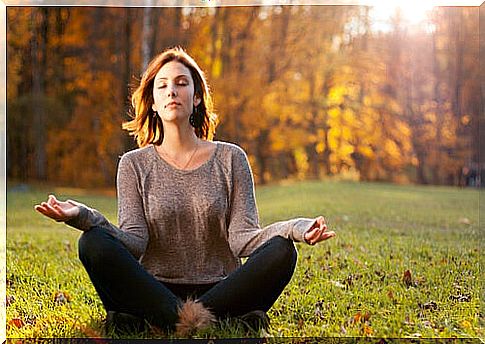Learning To Live In Our Body

80% of the vagus nerve fibers that connect the brain to many internal organs are afferents. That is, these fibers run from the external body to the brain. Which means that we can directly educate and control our activation system through breathing and movement.
Since time immemorial, this way of educating the body has been a fundamental principle in China and India. The study of oriental and alternative medicine discovered new ways to improve our state in a more natural way, still suspicious for the general culture.
Work our body to find ourselves
We all know how to breathe, but calming our breathing is a fundamental asset for the recovery of mental health for many people. When we consciously breathe slowly and deeply, we teach the body to slow down the PNS (parasympathetic nervous system).

For example, when working on the effects of trauma and abandonment, emotional regulation makes a big difference in outcomes. One aspect of such regulation is respiratory control. The more focused we stay on our breath, the more beneficial it will be.
Thus, it is important to pay attention to the beginning and end of the breath, and to wait a moment before the next inspiration. If we can notice how the air leaves and enters our body, it will be easy to become aware of how important this “vital and natural act” is.
Harmonize mind and body through yoga
Yoga refers to a traditional discipline originating in India, which means “union of physical and mental well-being.” The word is associated with meditation practices in Hinduism, Buddhism, and Jainism. Through body work, a yoga class can help us connect with the deepest and most forgotten parts of our selves. Yoga is much more than a simple exercise or relaxation technique and these are the main benefits it can offer:
- Development of consciousness. Help to become aware of our potentials and natural resources, as well as our resistances and fears.
- Inner peace. It favors leading a life with serenity and confidence.
- It enhances the ability to be present in one’s life. Relieves pain, reduces stress, improves breathing …
- Improves health conditions. There is a long list of all the benefits that Yoga can have on our health. For example, cardiovascular conditioning, weight control, improved breathing, increased flexibility …
Research carried out by the National Institutes of Health showed that ten weeks of Yoga practice reduced the symptoms of PTSD (Post-Traumatic Stress Disorder). Especially those patients who had not responded well to other types of interventions improved.

Movements that improve our health
Some cultures in Japan and Korea focus on increasing awareness of movement and the present in which it occurs; capacities that, for example, people who carry a trauma tend to have altered. Martial arts, aikido, judo, taekwondo, jujitsu, Brazilian capoeira… All these techniques have things in common, such as physical movement, breathing and meditation.
Yoga, tai chi, gigong in China or the rhythmic sounds of drums in Africa also rely on the idea that recovery is found in self-knowledge or self-awareness. Jon Kabat-Zinn is one of the pioneers in interventions that seek to benefit from the communication channels that exist between the body and the mind. Thus, in 1979, he created a stress reduction program based on increasing awareness.
Paying attention to our bodily sensations makes it easier for us to learn to recognize the ups and downs of our emotions, and therefore, to have more control over them. Practicing awareness calms the sympathetic nervous system and reduces the chances of responding by fighting or fleeing. In this sense, body awareness allows us to release sensations or impulses that were blocked at the time in order to prioritize others that were more important for our survival.

Our sensory world is born before us
We cannot fully recover without feeling safe in our skin. When physical tension is released, feelings can also be released. The movement helps the breathing to go deeper and release tensions. The stories collected in studies with abused children, soldiers with PTSD, victims of incest, refugees … testify to how expressive therapies can be effective.
By way of reflection and closure, let us think that support for the investigation of new intervention protocols is only achieved for what has already been proven. Recall that almost four decades have passed since the discovery of the antibiotic properties of penicillin by Alexander Fleming in 1928 and the definitive understanding of its mechanism in 1965.









